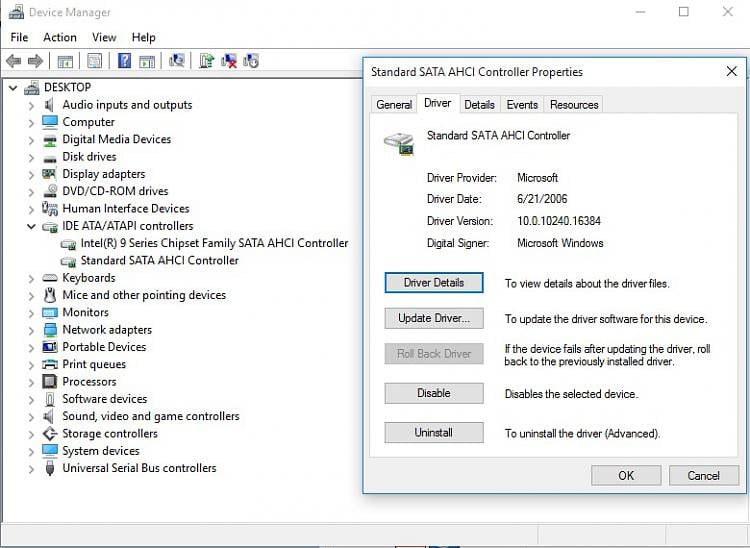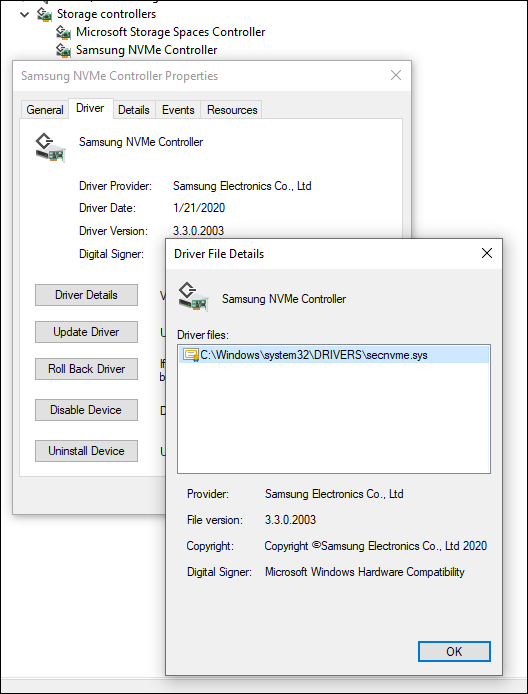

Until Samsung adjusts its software to support RAID arrays, you'll have to use Microsoft's NVMe driver built into Windows 10, 8.x and available as a download for Windows 7. Per-drive performance drops, unfortunately, which will become obvious in certain workloads when we compare a. Close the window. Windows is officially wiped from our M.2 drive. Shut down the computer. Step 4: Launch Windows Install Media. Plug in that USB/DVD, and boot from the Windows Install Media. Select your version of Windows to install (most likely Windows 10 Home), and proceed.

Samsung Nvme Controller Driver Windows 10 32 Bit

Samsung Nvme Driver Win 10
NVMe Solid State Drive Firmware. laptops-and-netbooks thinkpad-x-series-laptops X1 Yoga 1st Gen (Type 20FQ, 20FR) Laptop (ThinkPad).
Samsung Nvme Driver Windows 10
I bought a new M.2 nvme Samsung 970 evo 1Tb drive.I want to do a clean install of win 10 system disk will be samsung 970 evo 250Mb.I want to ask if I should put away the other nvme disk before installing win 10 or I can leave it there for installation. thank you
Does this also apply to two nvme?
Here is the procedure for install of Windows on a Nvme drive.
1 - Make sure you unplug all SATA and USB drives, the M.2 drive has to be the only drive installed.
2 - Go into the bios, under the boot tab there is an option for CSM, make sure it is disabled.
3 - Click on secure boot option below and make sure it is set to other OS, Not windows UEFI.
4 - Click on key management and clear secure boot keys.
5 - Insert a USB memory stick with a UEFI bootable iso of Windows 10 on it.
6 - Press F10 to save, exit and reboot.
7 - Windows will now start installing to your NVME drive as it has its own NVME driver built in.
8 - When the PC reboots hit F2 to go back into the BIOS, you will see under boot priority that windows boot manager now lists your NVME drive.
9 - Click on secure boot again but now set it to WIndows UEFI mode.
10 - Click on key management and install default secure boot keys
11 - Press F10 to save and exit and windows will finish the install.
Once you have Windows up and running, shutdown the PC and reconnect your other SATA drives. Typically you don't put anything on SATA port 1 as this is now reserved for the NVME drive and may cause a conflict.
HWinfo https://www.hwinfo.com/ can check to see if done correctly, on the bottom right of the system summary, Operating System UEFI Boot (in green) & Secure Boot (in green) would be clean install of windows on to Nvme.